Your cart is currently empty!
Category: Heart Support
-

Get to Know NO—
When you hear “nitric oxide,” you might think of nitrous oxide, better known as laughing gas. While you might appreciate nitrous oxide gas at the dentist’s office, nitric oxide is quite different. Taking care to maintain plenty of nitric oxide in our bodies is no laughing matter, and you need to know why.
Doctors Robert Furchgott, Louis Ignarro and Ferid Murad won the 1998 Nobel Prize for medicine after discovering the importance of “nitric oxide as a signalling molecule in the cardiovascular system. In the two decades since, nitric oxide has been studied extensively and is even considered by some to be the most important molecule in the body due to its role in transmitting nerve impulses from cell to cell in every tissue in the body.
Heart Disease on the Rise Around the World
According to the World Heart Federation, deaths due to cardiovascular disease have risen 60% across the globe over the last 30 years. The World Health Organization estimates that 1.28 billion adults over age 30 have hypertension, or high blood pressure, with only 21% having it under control.
Statistically speaking, half of all men in the United States, and nearly half of women, have hypertension. What’s more, almost half of the adults in the U.S. with high blood pressure aren’t aware they have the condition and, therefore, aren’t likely to do anything to improve their cardiovascular health.
While such numbers may not come as news to you, you might be surprised to learn that heart disease often has less to do with the heart itself than with the arteries and blood vessels throughout your circulatory system.
High blood pressure occurs when the force of blood pushing against the walls of your arteries is consistently too high. Vasodilation, or relaxation, of the arteries can become compromised due to damage caused by years of uncontrolled elevated blood pressure, high lipids and glucose in the blood, and calcified plaque buildup in the arterial lining. Instead of the heart having smooth, flexible arteries to pump blood through, the heart has to work extra hard to force blood through narrow, stiff arteries, which can lead to serious cardiovascular conditions as we age.
What Does Nitric Oxide Do in the Body?
The best known function of nitric oxide in the body is its ability to help manage high blood pressure, but healthy levels of nitric oxide generate a wealth of benefits for a number of body systems.
- Cardiovascular – In healthy arteries, nitric oxide signals the vasodilation response of arteries. Vasodilation improves blood flow, increases oxygen in the blood, and modulates blood pressure.
- Pulmonary – Similar to its function in the cardiovascular system, nitric oxide signals bronchodilator nerves to dilate, increasing the lungs’ ability to deliver oxygen throughout the body.
- Immune – Nitric oxide blocks virus replication, giving the immune system a better chance of fighting off symptoms associated with viruses, harmful pathogens and other foreign invaders.
- Cognitive – Studies have shown that a nitrate-rich diet may increase regional cerebral blood flow to the frontal lobe of the brain in older patients, an important factor in protecting against cognitive decline.
- Endocrine – This molecule has been shown to improve insulin sensitivity, which may reduce diabetes complications, and it is known to help improve other hormone functions in the body, as well.
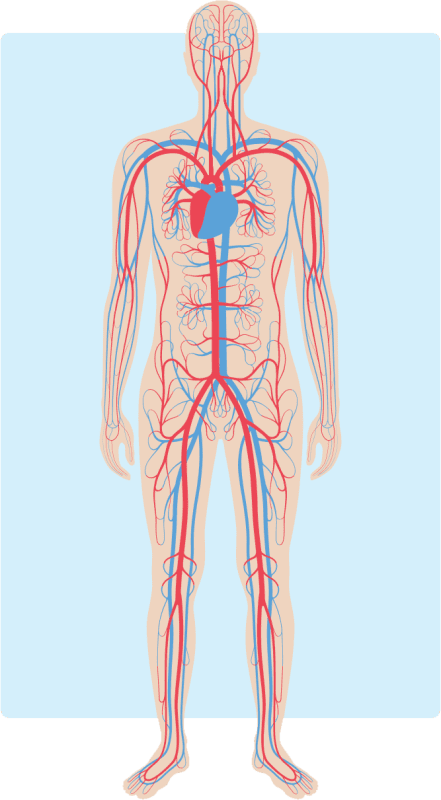
How Do You Get Nitric Oxide?
The good news is that our bodies produce nitric oxide as naturally as we breathe, literally! Deep breathing in through your nose not only produces nitric oxide in the paranasal sinuses, it effectively delivers it down into your lungs. Aside from your sinuses, nitric oxide is produced in the endothelial cells that line the insides of your blood vessels—all 60,000 miles of them.
The bad news is that our bodies produce less and less nitric oxide as we age, which can leave us with a lack of energy, high blood pressure and cognitive decline. By age 40, most Americans produce only half the nitric oxide they produced in their 20s. By age 50, nitric oxide production has decreased to only 35%, and it falls to a mere 15% of what it once was by the time we reach age 60.
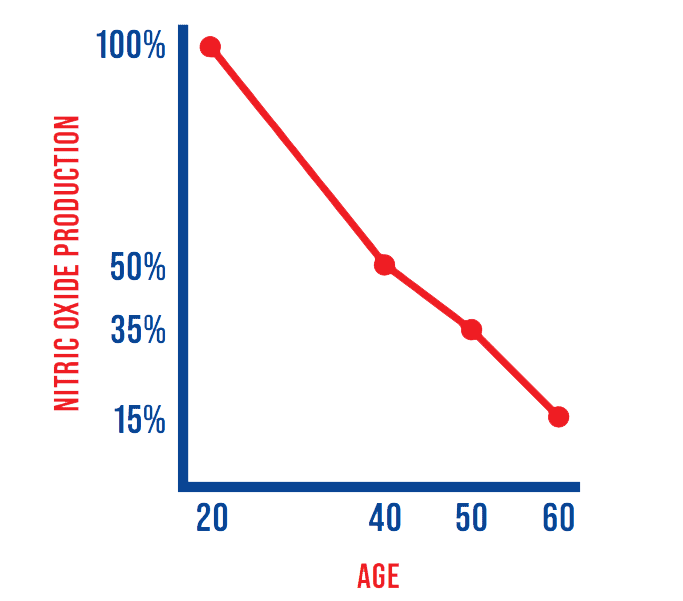
With such a dramatic decrease in our bodies’ own ability to produce this crucial molecule, it is essential that we find other ways to get nitric oxide. Sadly, nitric oxide itself isn’t something you can consume; however, we can consume food rich in nitrates, which the body converts into nitric oxide, as well as antioxidants, which aid in the conversion process.
The amino acids L-arginine and L-citrulline also produce nitric oxide in the body. L-arginine can be found in red meat, fish and dairy products, while L-citrulline is also available in meat, as well as legumes. Beets are also a wonderful source of nitrates.
A Scientific Solution for Low NO
If red meat and dairy aren’t feasible for your diet for any reason, supplementing with a product like TriVita’s Nitric Oxide Plus may be an excellent way to make sure your body can make enough nitric oxide.
With 2,000 mg of beet root powder, plus horse chestnut and the amino acids L-arginine and L-citrulline, TriVita’s unique nitric oxide formulation is optimally balanced to help support blood flow and healthy circulation.
References
1https://www.nobelprize.org/prizes/medicine/1998/7543-the-nobel-prize-in-physiology-or-medicine-1998/
2https://world-heart-federation.org/news/deaths-from-cardiovascular-disease-surged-60-globally-over-the-last-30-years-report/#:~:text=Search%20for%3A%20Search-,Deaths%20from%20cardiovascular%20disease%20surged%2060%25%20globally,the%20last%2030%20years%3A%20Report&text=GENEVA%2C%2020%20May%202023%20%E2%80%93%20Deaths,World%20Heart%20Federation%20(WHF)
3https://www.who.int/news-room/fact-sheets/detail/hypertension
4https://www.cdc.gov/bloodpressure/facts.htm#:~:text=Rates%20of%20High%20Blood%20Pressure%20Control%20Vary%20by%20Sex%20and%20Race&text=A%20greater%20percentage%20of%20men,pressure%20than%20women%20(44%25).&text=High%20blood%20pressure%20is%20more,or%20Hispanic%20adults%20(39%25)
5https://www.who.int/news-room/fact-sheets/detail/hypertension
6https://www.trivita.com/the-sky-is-the-limit/
7https://www.ncbi.nlm.nih.gov/pmc/articles/PMC4425174/
8https://www.ncbi.nlm.nih.gov/pmc/articles/PMC1906415/
9https://www.ncbi.nlm.nih.gov/pmc/articles/PMC3018552/
10https://www.ncbi.nlm.nih.gov/pmc/articles/PMC3390088/
11https://pubmed.ncbi.nlm.nih.gov/8971255/#:~:text=Abstract,inspiration%2C%20especially%20during%20nasal%20breathing
-
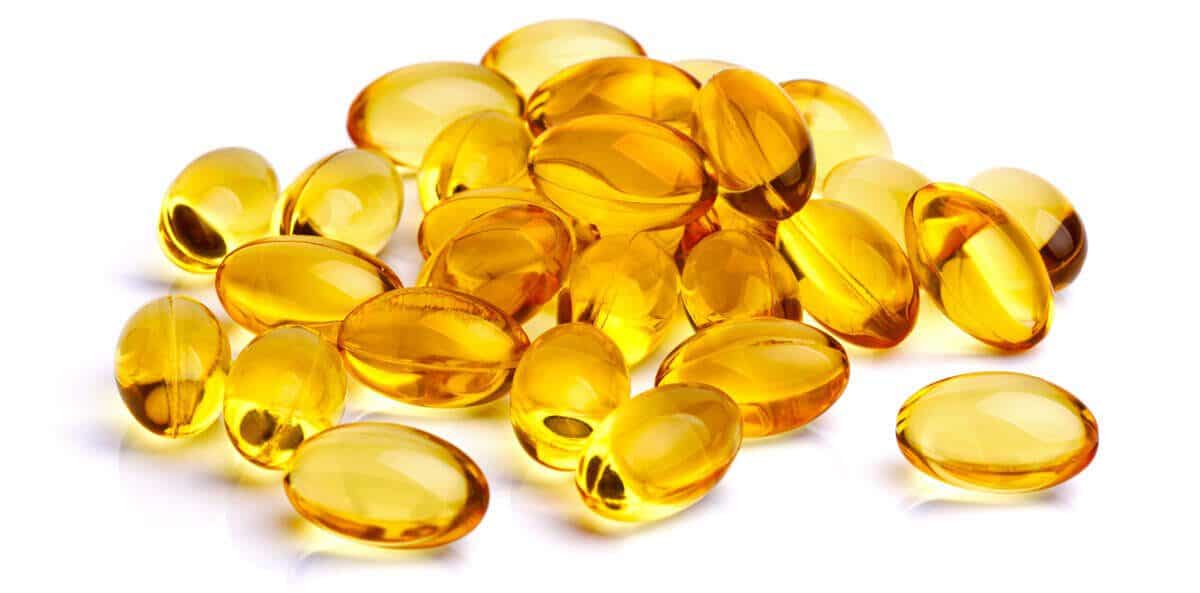
What's an Omega-3 Index And Why is it Important to Your Health?
Omega-3 fatty acids are essential and required for human life. While many know the importance of omega fatty acids as part of a healthy lifestyle, it hasn’t been clear how low amounts of fatty acids in the blood are also linked to all types of death including heart disease and cancer until now.
A recent analysis consisting of 17 perspective studies and consisting of more than 40,000 participants over 16 years has shown a 15-18% lowered risk of all causes of death based on higher polyunsaturated fatty acids (PUFAs) in the blood. It is important to detect early signs of omega-fatty acid deficiencies for supplement therapy to aid in reducing the incidence of disease and risk of premature death.
While the analysis does not show how polyunsaturated fatty acids (PUFAs) were consumed by each participant, it’s important to recognize the best sources. The best sources of PUFAs are found in sea life, mostly cold-water fish. Fish have the highest concentrations of PUFA’s as well as the best ratio of omega-3 EPA and DHA which reduces chronic inflammation—the root cause of most diseases.
Omega-3 fatty acids 3, 6 and 9 also contribute to multiple biological roles, such as influencing inflammation, reducing oxidative stress and presenting neuroprotection and cardiovascular protection. There are 100 billion neurons that make up your brain consisting of 60% PUFAs, and every cell in the human body has a cell membrane made of PUFAs. We are made entirely out of cells and cellular performance is key to maintaining optimal health.
Quality fish oil supplements have an excellent ratio of omega-3 EPA and DHA and come without the harmful toxins such as mercury found in fish. A study in the UK shows taking fish oil supplements lowers the risk of cardiovascular and all diseases across 427,000 participants. “The Heart and Soul” study shows that lower levels of whole blood EPA and DHA levels are associated with all causes of mortality and an accelerated rate of telomere shortening over a 5-year period. Accelerated telomere shortening is associated with a shorter lifespan.
We’re all looking for the lifestyle improvements we can make to not only maintain but improve our health outcomes. According to this analysis, we can live a longer, fuller life with less disease by managing the omega-3 levels in our blood. Because omega-3s have a powerful influence on the health of every cell we have, we can expect to have more energy, vitality, and quality of life to continue to do the things we love longer.

References:
1. https://www.nutraceuticalsworld.com/contents/view_breaking-news/2021-04-23/study-finds-omega-3-index-is-strong-risk-predictor-of-premature-death
2. https://pubmed.ncbi.nlm.nih.gov/12442909/
3. https://pubmed.ncbi.nlm.nih.gov/32131999/
4. https://www.ncbi.nlm.nih.gov/pmc/articles/PMC3058601/ -
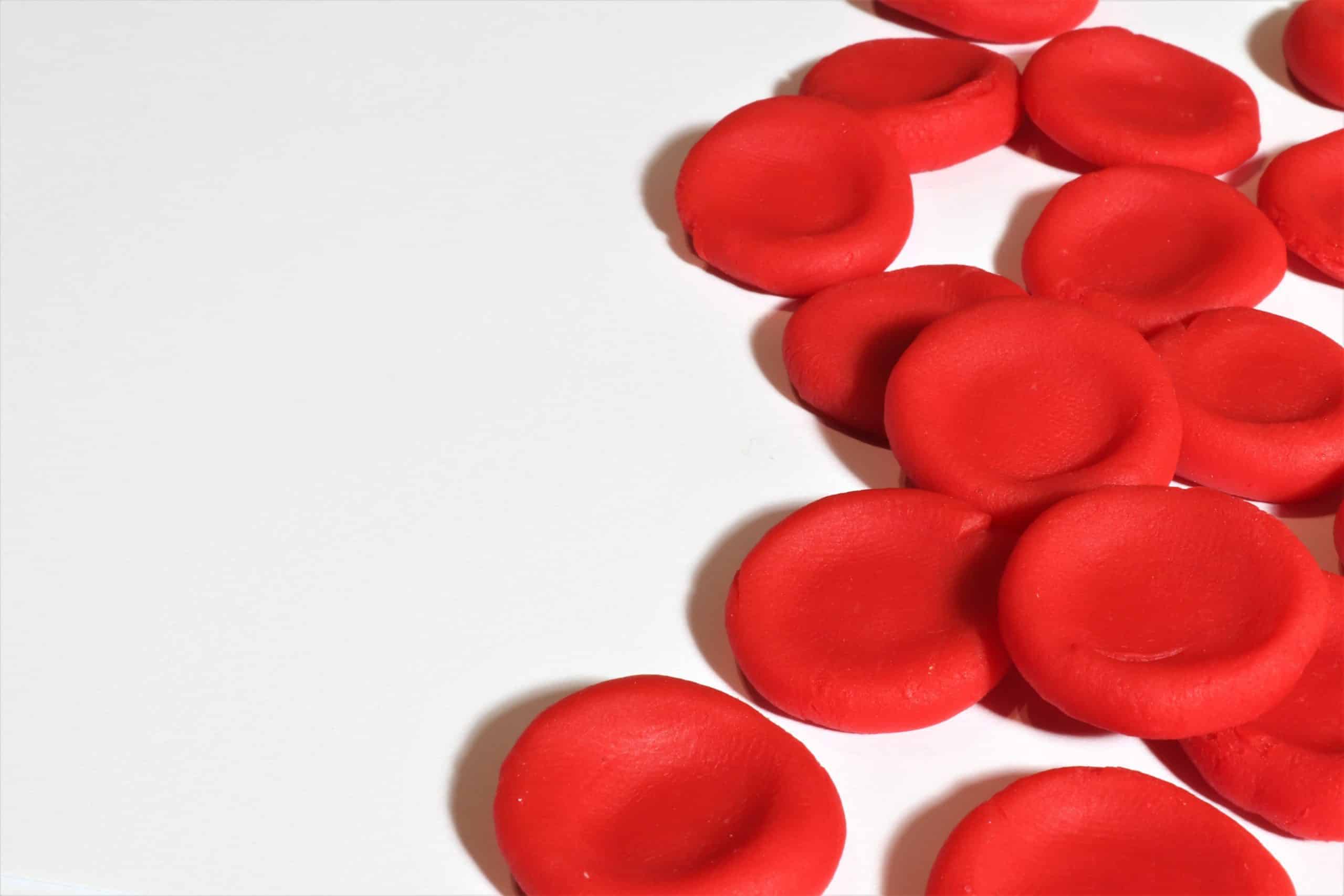
Nitric Oxide Keeps Your Blood Flowing

There is so much noise out there about stress and bad news leading to high blood pressure, it’s important to keep an eye on our own. High blood pressure occurs when the force of your blood pushing against the walls of your arteries is consistently too high. High blood pressure can lead to various health issues, such as heart and kidney problems. Consuming nitrates has been shown to help blood pressure because your body converts the nitrates to nitric oxide, which then causes blood vessels to relax and dilate, resulting in lower blood pressure. Various studies have shown nitrates help lower blood pressure by increasing the production of nitric oxide. Additionally, it has been thought people with high blood pressure have an impaired ability to produce nitric oxide.
Nitric oxide is necessary for healthy blood flow.
Healthy blood flow is essential for the heart, brain and all of our other organs. It also helps promote endurance, soothes sore muscles and can even help with healthy aging. Nitric oxide is synthesized and released into the endothelial cells, which is a cell layer lining all blood vessels, with the help of nitric oxide synthases that convert arginine into citrulline which helps produce nitric oxide in the process. We need to do what we can to stay away from stress, toxic environments and bad foods. But we also need a good level of nitric oxide, for a balanced, healthy body that will serve us well as we go through our happy lives with our families.

-

The Sky is the Limit with Optimal Levels of Nitric Oxide
Written by Paul Bernitt, DHH
Director of Clinical and Wellness ServicesNitric oxide is a gas produced by the body and it is produced by almost all human cells. It is made naturally in our bodies and plays a vital role in signaling between cells, neurotransmission and immune response, to name just a few. The most widely-known function of nitric oxide is its ability to send a signal to the endothelial lining of our arteries to expand and contract, which allows us to maintain vital blood flow rich in oxygen and nutrients throughout our bodies. This molecule has a half-life of less than a second so we must produce enough to prevent life-threatening consequences as we age. Because of nitric oxide’s systemic effect, it is important to understand what this miracle molecule is and how to maintain and improve the body’s ability to produce it throughout our lifetime.
Nitric oxide was brought to worldwide attention in 1988 when Dr. Robert Furchgott, Dr. Louis Ignarro and Dr. Ferid Murad won the Nobel prize for medicine by discovering nitric oxide as a signaling molecule in the cardiovascular system. Since then, there have been almost 175,000 scientific papers written about nitric oxide which have shown many other benefits of this vital molecule. It has been said that this molecule may be the most important one in the human body because of its role, not only in the cardiovascular system but also in its involvement in nerve impulses from cell to cell in every tissue throughout the body.
We live in a world where heart disease continues to be the number one cause of death. In most cases, heart disease has more to do with the plumbing, such as damaged arteries, than the heart itself. In healthy arteries, nitric oxide signals the vasodilation (relaxation) response of arteries. Vasodilation increases blood flow, increases oxygen in the blood, and modulates blood pressure. Because nitric oxide is an electron donor, this miracle molecule is cardio-protective as it enhances and maintains arterial elasticity through its anti-oxidant effects. In unhealthy arteries, vasodilation is compromised due to damage caused by years of uncontrolled elevated blood pressure, high lipids and glucose in the blood and calcified plaque buildup in the arterial lining. Instead of the heart having smooth, flexible arteries to pump blood, the heart has to supply blood through narrow stiff arteries leading to serious cardiovascular conditions as we age.
This molecule has also been shown to improve insulin sensitivity which reduces diabetes complications and is known to improve other hormone functions in the body. When we become insulin resistant, our cells become less permeable, which limits the ability of glucose to be converted to energy and increases toxicity. When glucose cannot be efficiently converted into energy, the levels of glucose in the blood rise and are converted into fat. High levels of glucose in the blood and obesity are significant antagonists to nitric oxide production.
One of the most significant concerns in modern society is the proliferation of harmful viruses. What many people do not know is that nitric oxide provides a protective immune response by its involvement with inhibiting virus replication. The immune system has a better chance of fighting off the symptoms associated with viruses and other foreign invaders if nitric oxide blocks virus replication.
Healthy nitric oxide levels systemically influence many functions of the body. Nitric oxide insufficiency can spawn a wide variety of symptoms and diseases caused by pathogenesis, which can lead to infectious diseases, tumors, autoimmune processes and chronic degenerative diseases as we age. Low nitric oxide levels lead to increased sympathetic tone (constriction) which negatively influences blood flow, blood pressure and vasodilation. The immune response to stop the replication of harmful pathogens and viruses and other foreign invaders also diminishes. As nitric oxide production continues to diminish so does motivation and stamina for activity.
Nitric oxide is the neurotransmitter of bronchodilator nerves in human airways and counteracts bronchoconstriction. Nitric oxide increases the lungs’ ability to deliver oxygen throughout the body by signaling the nerves to dilate. When the physical demand of the body is increased through activity, nitric oxide is produced to stimulate vasodilation and a higher respiration rate. We can live a month without food and 3 days without water, but we have only minutes to live without oxygen. All of our cells require oxygen and the level of nitric oxide in the blood determines the amount of oxygen our cells can receive by dilating the arteries, signaling the lungs to increase respiration and signaling the heart to beat faster.
New studies show that the reduction of nitric oxide production due to arterial stress may be contributing to premature aging. Nitric oxide has been shown to inhibit premature telomere shortening. Telomeres are protective caps at the ends of the DNA molecules that make up our chromosomes. Much like the plastic tips on the ends of shoelaces they protect the ends of chromosomes from damage. Each time a cell divides, the telomere gets shorter, soon it becomes so short that the cell can no longer divide to create new healthy cells. Science is discovering that nitric oxide reacts to tissue-derived oxygen radicals and by doing so reduces oxidative stress which can lead to the premature death of cells and shorter telomeres. The less oxidative stress we have, the longer our telomeres can be and the better our cells can reproduce and work as they should.Age is a major contributor to reducing nitric oxide production. As we age we produce less nitric oxide. The aging process, due to stress and damage to our arteries, contributes to less endothelial sensitivity and the thickening of our arterial lining. All of this, plus chronic inflammation, plaque buildup, stiffening of arteries, calcification, and eventually rupture of plaque leads to heart attacks and strokes. By age 40, most Americans only produce 50% of the nitric oxide as compared to their 20’s, by age 50, 35%, and by 60+ only 15%.
For more information about Nitric Oxide, please consider these references:
https://pubmed.ncbi.nlm.nih.gov/11994742
https://pubmed.ncbi.nlm.nih.gov/18341206
https://www.nature.com/articles/ni1001-907
https://www.ncbi.nlm.nih.gov/pmc/articles/PMC1573233
https://pubmed.ncbi.nlm.nih.gov/23075551
https://www.ahajournals.org/doi/10.1161/01.HYP.27.4.849
https://www.ncbi.nlm.nih.gov/pmc/articles/PMC2258411
https://www.researchgate.net/publication/11944012_Mechanisms_of_the_Antioxidant_Effects_of_Nitric_Oxide
https://pubmed.ncbi.nlm.nih.gov/27872324
https://www.ncbi.nlm.nih.gov/pmc/articles/PMC3838201
https://www.clevelandheartlab.com/wp-content/uploads/2018/11/CHL-D070-AUG2018-ADMA-SDMA-Practitioner-One-Pager.pdf
https://pubmed.ncbi.nlm.nih.gov/18090659
https://pubmed.ncbi.nlm.nih.gov/7546629
https://www.ahajournals.org/doi/full/10.1161/01.RES.87.7.540
https://www.ncbi.nlm.nih.gov/pmc/articles/PMC3390088/#b56
https://pubmed.ncbi.nlm.nih.gov/33296498
https://pubmed.ncbi.nlm.nih.gov/15650225
https://journals.asm.org/doi/10.1128/JVI.79.3.1966-1969.2005
https://dermnetnz.org/topics/horse-chestnut-extract
https://pubmed.ncbi.nlm.nih.gov/23152216
https://www.sciencedirect.com/science/article/pii/S0102695X15001003
https://pubmed.ncbi.nlm.nih.gov/8569363/https://ods.od.nih.gov/factsheets/Magnesium-HealthProfessional/ -

Antiviral Benefits of Trans-resveratrol
Resveratrol is a type of natural phenol and a phytoalexin produced by red grapes, peanuts and other plants. Trans-resveratrol is the active ingredient in resveratrol and is widely used in supplements.
Trans-resveratrol is great at multitasking. It can help with heart health, brain health, anti-aging and has antiviral benefits. In recent years, extensive research on resveratrol has been carried out, demonstrating its capacity to prevent a wide variety of conditions, including cardiovascular diseases and cancer, and to control fungal, bacterial and viral infections. Studies suggest that the chemical agent in resveratrol interferes with infection by altering cellular pathways rather than acting directly against the virus itself.
The antiviral effects of resveratrol have been demonstrated in a number of pathogenic human and animal viruses, including influenza, Epstein-Barr and various respiratory viruses. The resveratrol inhibits viral protein synthesis and various transcription and signaling pathways and viral-related gene expressions.
There still are more studies to be done on resveratrol, but evidence gathered so far shows high antiviral potential. Resveratrol has shown to be a potent antiviral molecule against various types of DNA and RNA viruses.
References
-
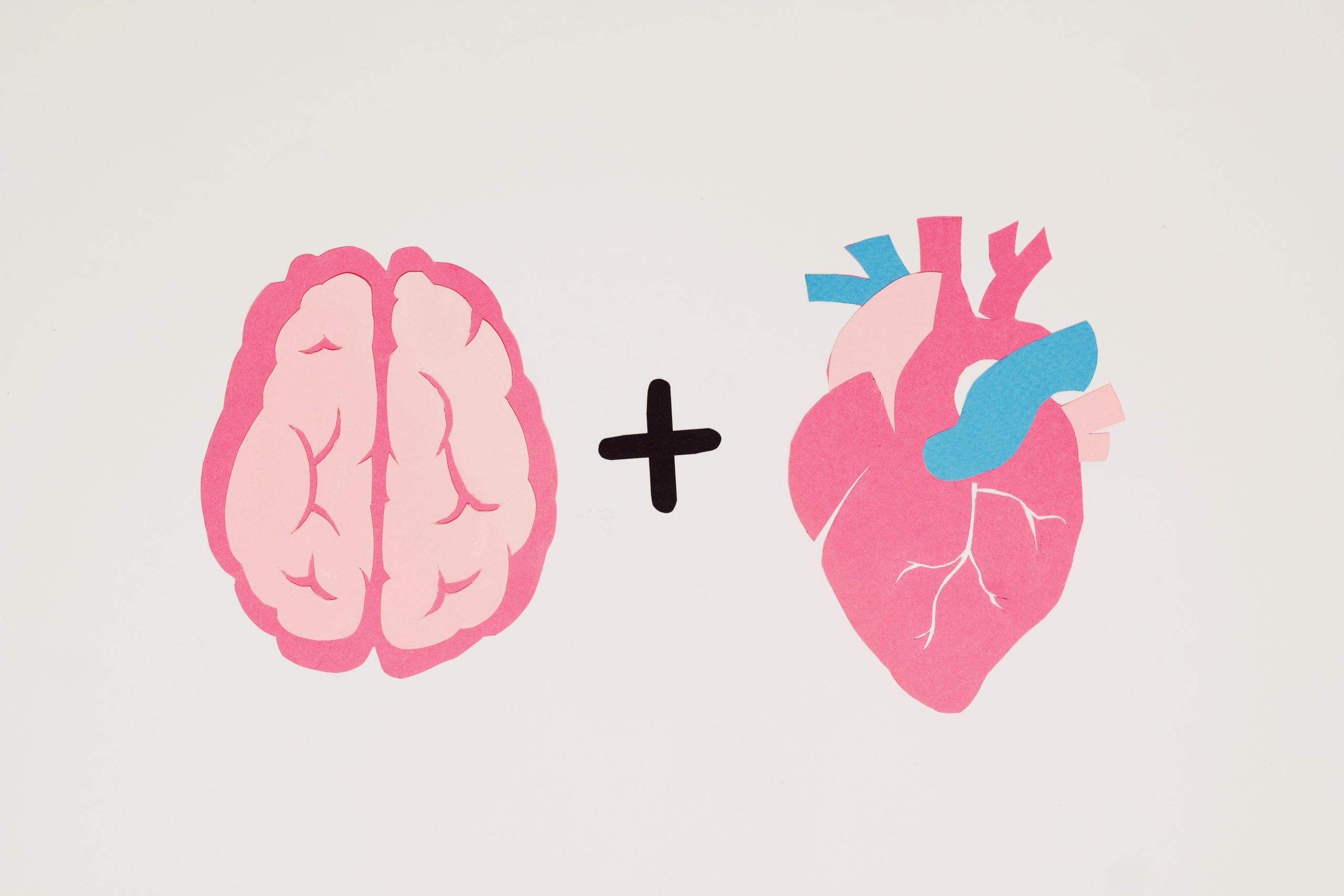
Brain Health & Trans-resveratrol
Growing older is the largest risk factor for neurodegenerative disease, commonly known as brain health. Included in that group is Alzheimer’s, Huntington’s and Parkinson’s diseases along with ALS. Some of these are passed down in our genes, but there are ways to at least slow down the process. The good news is that resveratrol has shown that it may help with this. Resveratrol is a type of natural phenol and a phytoalexin produced by red grapes, peanuts and other plants. Trans-resveratrol is the active ingredient in resveratrol and is widely used in supplements. Both have beneficial effects on the human brain. Clinical trials have demonstrated that resveratrol reduces levels of amyloid-beta in cerebrospinal fluid and improves cognitive function in people with Alzheimer’s disease.

Clinical evidence derived from randomized clinical trials suggests that resveratrol can help with memory loss by improving cerebral blood flow, cerebrospinal fluid level and performance in some cognitive tests.
As the general population grows older, hundreds of millions of people worldwide are affected by neurological disorders. There are many clinical studies dealing with brain health and resveratrol has shown to possess ingredients that can help slow down, and in some cases, prevent neurological disorders, improve memory, as well as slow down the aging process.
Resveratrol may contribute to brain aging reversal by as much as ten years.
References
1. https://pediaa.com/what-is-the-difference-between-resveratrol-and-trans-resveratrol/
2. https://www.ncbi.nlm.nih.gov/pmc/articles/PMC5339301/
3. https://www.ncbi.nlm.nih.gov/pmc/articles/PMC6657254/
4. https://www.nutraingredients.com › Article › 2020/04/08 -

Heart Health & Trans-resveratrol
Heart disease is the leading cause of death in the United States. Heart disease includes various disorders of the heart itself or the blood vessels. It could be coronary artery disease, deep vein thrombosis, congenital heart disease or many others. Heart failure is defined as the inability to pump enough blood to the rest of the body. They all can be classified as a major medical concern and need attention to help slow down the spread or treat the symptoms as best as possible.
Resveratrol is a type of natural phenol and a phytoalexin produced by red grapes, peanuts and other plants. Trans-resveratrol is the active ingredient in resveratrol and is widely used in supplements.
Clinical trials using trans-resveratrol have shown that it may help. Resveratrol could be linked to a lower risk of inflammation and blood clotting, which can lower the risk of heart disease. Resveratrol is also known as a polyphenolic compound and has antioxidant and anti-inflammatory properties. These also help with cardiovascular health. The polyphenols are also present in grapes and red wine, which contributed to the “French Paradox” in the 1990s that found that red wine in moderation may be good for you.
Trans-resveratrol has several beneficial effects and can act at different levels such as cellular signals, enzymatic processes, apoptosis and gene expression. All of these together, along with the ability to flow freely through the bloodstream, have been shown to have positive effects fighting different cardiovascular diseases.

References
https://pediaa.com/what-is-the-difference-between-resveratrol-and-trans-resveratrol/
https://www.ncbi.nlm.nih.gov/pmc/articles/PMC4882663/
https://www.intechopen.com/chapters/62439
-

7 Super Foods For a Healthy Heart
By Christa Orecchio,
Clinical and Holistic NutritionistThere are lots of things we can do to keep our hearts healthy, and eating right is one of the most important. By including more of these everyday “super foods” into your diet, you’ll be on the right track.
Blueberries
They top the list as one of the most powerful disease-fighting foods. Blueberries contain anthocyanins, the antioxidant responsible for their dark blue color. These delicious jewels are also packed with fiber, Vitamin C and heart-healthy potassium. Add them regularly to yogurt, smoothies, trail mix, salads or just eat them by themselves.
Make sure to buy organic blueberries. The conventional, non-organic type are on the “dirty dozen” list: they are likely sprayed with pesticides that permeate the entire fruit due to the vulnerability of the skin.
Wild salmon (reference)
This cold-water fish is a great source of protein and packed with heart-healthy omega-3 fatty acids that work to slash inflammation. The American Heart Association advises eating salmon and other omega-3 rich foods twice a week for benefits that go beyond heart health. Buy wild-caught salmon to avoid the lack of nutrients and less than ideal “raising conditions” that can be found in some
farm-raised salmon.Oatmeal (reference)
Oats are a nourishing whole grain and a great source of vitamins, minerals and cholesterol-lowering fiber. Research shows that oats help lower cholesterol levels and keep you regular.
Try adding oats whenever you bake. Substitute oat flour for white or wheat flour in pancakes, muffins, quick breads, cookies and coffee cakes for an added dose of fiber. Or try oats in place of breadcrumbs in dishes such as meatloaf, meatballs or breading on poultry.

Almonds and Walnuts
These are two very healthy snack choices. They’re high in plant omega-3 fatty acids, Vitamin E, magnesium, folate, fiber, heart-favorable mono- and polyunsaturated fats and phytosterols.
Kale
Even stronger than spinach, kale is the powerhouse of the vegetable kingdom. Its rich, dark color comes from the multiple phytochemicals, vitamins, and minerals (especially folate and iron) that also fight depression and disease, promote heart health and help preserve eyesight. To top it off, kale is also the “king of calcium”: it delivers the highest absorbable form of calcium possible.
Flaxseed
Rich in omega-3 fatty acids, cancer-fighting lignans, phytoestrogens and fiber, this powerful seed is most effective when it is ground up and stored away from light, heat and air. Studies suggest that flaxseed lowers the risk of blood clots, stroke and irregular heartbeats. It may also help lower LDL “bad cholesterol” and triglycerides. Use it on top of salads or soup, in yogurt parfaits, smoothies or morning cereal.
Brown rice
Contains high levels of B-complex vitamins and magnesium, which nourish our central nervous system. Vitamin B-12 and Vitamin B-6 in particular protect against blood clots and atherosclerosis, or hardening of the arteries. Niacin (Vitamin B-3) helps increase HDL “good” cholesterol.
With only a few simple dietary additions (found in any grocery store), you will be well on your way to having more energy and taking care of that amazing heart that beats for you, every second of every single day.
-

Conquering Atherosclerotic Cardiovascular Disease
At a time when the world is gripped by the Covid-19 pandemic, early AIDS doctors look back on 40 years of HIV/AIDS. Many of them first encountered AIDS when they were in their early 30s, and their lives have been shaped to a large extent by that earlier pandemic.
Before a medicinal product can be placed on the market it requires a marketing authorisation or registration. In order for these to be granted, the pharmaceutical entrepreneurs have to submit the corresponding applications. Depending on the nature of the project, different types of applications for marketing authorisation are available. The following pages provide information regarding the respective requirements
This evidence must be based on a detailed scientific bibliography covering all relevant preclinical and clinical aspects of the medicinal product. For this reason, this form of application is also referred to as a “bibliographical application”.
In addition to the content, the nature of the literature sources is also decisive, as the submitted literature must be freely available in the public domain and published by a reputable source. Therefore, data from own preclinical and clinical trials may not be taken into account in the discussion of a bibliographic application
-

Latest Study Indicates Low Omega-3 Index Linked to Premature Death
Omega-3 fatty acids are essential and required for human life. While many know the importance of omega fatty acids as part of a healthy lifestyle, it hasn’t been clear how low amounts of fatty acids in the blood are also linked to all types of death including heart disease and cancer until now. A recent analysis1 consisting of 17 perspective studies consisting of more than 40,000 participants over a 16-year span has shown a 15-18% lowered risk of all causes of death based on higher polyunsaturated acids (PUFAs) in the blood.
While the analysis does not show how polyunsaturated acids (PUFAs) were consumed by each participant, it’s important to recognize the best sources. The best sources of PUFAs are found in sea life such as cold-water fish. Fish have the highest concentrations of PUFA’s as well as the best ratio of omega-3 EPA and DHA which reduces chronic inflammation—the root cause of most diseases.
Not all forms of omega-3 fatty acids in the blood show a lower risk of death in the 15,720 participants who died in the study. For instance, there is no link to a reduced death risk seen in blood levels of 18 carbon omega-3 and alpha-linoleic acid, both of which come from plant-based sources such as flaxseed, hempseed, and chia. Alpha-linoleic acid (ALA) are short-chain omega-3 fatty acids. Though plant-based ALA is beneficial, DHA and EPA have more potent health benefits than ALA omega-3 fatty acids have. A person must consume a copious amount of plant-based foods to gain the same benefits equivalent to a single serving of cold water fish.
Omega-3 fatty acids 3, 6, and 9 also contribute to multiple biological roles, such as influencing inflammation, reducing oxidative stress, and presenting neuroprotection and cardiovascular protection. There are 100 billion neurons that make up your brain consisting of 60% PUFAs, and every cell in the human body has a cell membrane made of PUFAs. We are made entirely out of cells and cellular performance is key to maintaining optimal health.

Quality fish oil supplements have an excellent ratio of omega-3 EPA and DHA and come without the harmful toxins such as mercury found in fish. A study in the UK shows taking fish oil supplements lowers the risk of cardiovascular and all diseases across 427,000 participants.3 “The Heart and Soul” study5 also shows that lower whole blood EPA and DHA levels are associated with all causes of mortality and an accelerated rate of telomere shortening over a 5-year period. Accelerated Telomere shortening is associated with a shorter lifespan.
Clinical Significance of measuring omega-3 & 6 fatty acids in the blood.
- Monitoring of omega fatty acids in the blood provides a baseline and monitoring of individuals known to have a cardiovascular disease to determine prescription compliance
- Monitor individuals who are taking omega fatty acid supplement therapy to manage the effectiveness of treatment.
- Detect early signs of omega fatty acid deficiencies for the purpose of supplement therapy to reduce the incidence of disease and risk of premature death1,2
Should you choose to have your doctor test your omega fatty acid levels in your blood, the reference ranges are as follows.
Omega-3 (EPA+DHA) Index1.4-4.9 %
Risk
Optimal>3.2 %
Moderate2.2-3.2 %
High<2.2 %Omega-6/Omega-3 Ratio 5.7-21.3
EPA/Arachidonic Acid Ratio ≤0.2
Arachidonic Acid 5.2-12.9 %
EPA0.2-1.5 %
DHA1.2-3.9 %

PHOTO SOURCE: https://www.fda.gov/food/consumers/advice-about-eating-fish 4 We’re all looking for the lifestyle improvements we can make to not only maintain but improve our health outcomes. According to this analysis, we can live a longer fuller life with less disease by managing the omega-3 levels in our blood. Because omega 3’s powerful influence on the health of every cell we have, we can expect to have more energy, vitality, and quality of life to continue to do the things we love longer.
References:
- https://www.nutraceuticalsworld.com/contents/view_breaking-news/2021-04-23/study-finds-omega-3-index-is-strong-risk-predictor-of-premature-death
- https://pubmed.ncbi.nlm.nih.gov/12442909/
- https://pubmed.ncbi.nlm.nih.gov/32131999/
- PHOTO SOURCE: https://www.fda.gov/food/consumers/advice-about-eating-fish
- https://www.ncbi.nlm.nih.gov/pmc/articles/PMC3058601/
-
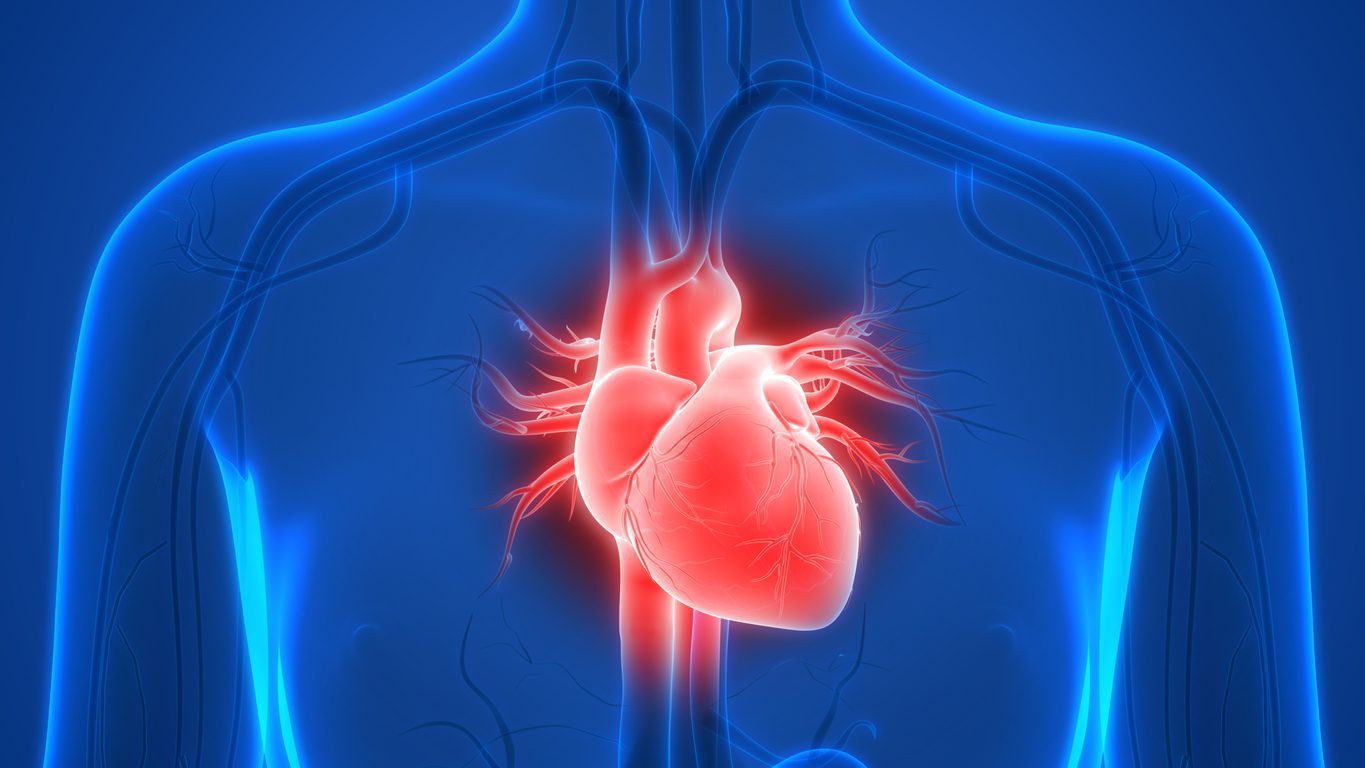
Show Your Heart Love With Important Vitamin K2
If you’ve ever suffered from cardiovascular disease or heard your heart isn’t in good shape from the doctor, you’re not alone. According to the Centers for Disease Control and Prevention (CDC) about one in five heart attacks are silent, meaning the person wasn’t aware they had one, and about 647,000 Americans die from heart disease each year. Our hearts are essentially the center of our lifeforce and learning we may not have been taking care of our hearts like we should be a harder pill to swallow than any medication or supplement.
While the damage may have been done early on, unbeknownst to our younger selves, further damage to the heart and cardiovascular disease, in general, may be prevented if a healthy lifestyle is followed. This includes daily exercise, not smoking, maintaining a healthy weight, and eating a nutritious diet with heart-healthy ingredients.
One such nutrient found to benefit the heart is vitamin K, namely vitamin K1 and K2 which occurs in the human diet. Vitamin K2 is hard to find in the Western diet, which is why it’s important to consider a Vitamin K Supplement.
What do the studies say?
Vitamin K deficiency can lead to calcification (mineral deposits) of vessel walls that have been associated with a higher risk of cardiovascular events. Consuming enough vitamin K2 may lower the risk of vascular damage.
Vitamin K2 is usually found in fermented foods and is not usually included in junk foods commonly found in an American diet. Vitamin K1 can be found in plant-based foods such as kale, spinach, and broccoli.

Listen to the Heart Research
While it’s imperative to listen to what your doctor has to say, making sure your heart has the right nutrients can help give it the extra TLC it needs. Vitamin K2, specifically MK-7, has been widely researched for heart-healthy benefits.
Research has shown:
- If at least 32 mcg of vitamin K2 is present in the diet, then the risks for blood-vessel calcification and heart problems are significantly lowered.
- High-intake of vitamin K2 was associated with protection against cardiovascular events.
- Long-term use of MK-7 supplements (found in vitamin K2) improved arterial stiffness, which is related to hypertension and high blood pressure, in healthy postmenopausal women.
Being aware of how to take care of the heart can help it perform its functions so you can keep living an active life. If you have heart concerns, consult with your doctor and consider a Vitamin K2 supplement so you don’t fall victim to heart disease.
References:
- Maresz K. Proper Calcium Use: Vitamin K2 as a Promoter of Bone and Cardiovascular Health. Integr Med (Encinitas). 2015;14(1):34-39.
- McFarlin BK, Henning AL, Venable AS. Oral Consumption of Vitamin K2 for 8 Weeks Associated With Increased Maximal Cardiac Output During Exercise. Altern Ther Health Med. 2017;23(4):26-32.
- Geleijnse JM, Vermeer C, Grobbee DE, et al. Dietary intake of menaquinone is associated with a reduced risk of coronary heart disease: the Rotterdam Study. J Nutr. 2004;134(11):3100–3105.
- Gast GC, de Roos NM, Sluijs I, et al. A high menaquinone intake reduces the incidence of coronary heart disease. Nutr Metab Cardiovasc Dis. 2009;19(7):504–510.
- Knapen MH, Braam LA, Drummen NE, Bekers O, Hoeks AP, Vermeer C. Menaquinone-7 supplementation improves arterial stiffness in healthy postmenopausal women. A double-blind randomized clinical trial. Thromb Haemost. 2015;113(5):1135-1144. doi:10.1160/TH14-08-0675
- If at least 32 mcg of vitamin K2 is present in the diet, then the risks for blood-vessel calcification and heart problems are significantly lowered.
-

Keep Heart During Heart Month
Tackle your health resolutions with supplements
Most of the New Year Resolution excitement has faded or has been long forgotten. Whether you planned to exercise more, eat right, lose weight, quit a bad habit, get out of debt, spend more time with God, etc. tackling all your health resolutions at once can be overwhelming. The best part about lasting change is it is about progress over perfection.
Proverbs 24:16 encourages us by saying: “For a righteous man falls seven times, and rises again, but the wicked stumble in time of calamity.”
There’s no better time than right now to rise up again and start or pick back up where you left off!
Our advice? Ensure you get an adequate amount of daily nutrients by setting up helpful reminders. While we try and get these nutrients from our food, supplementing can help bridge any gap in nutrition. That is one aspect of physical health that can get overlooked with the hustle and bustle of life and what the day brings. We each have our own supplement routine that we want to share with you. We may miss a day here and there, or we may make-up for more days than we miss. We want you to share your routine with us too. Email us anytime at ElliWives@TriVita.com. We’d love to hear from you!
Susan’s Supplement Plan
Taking my supplements daily is a big part of my wellness program.
It’s so easy to miss a day when I have them tucked away in a drawer!
My solution has been to pack my supplements in a variety of small, pretty containers. Each evening, I put out my supplements for the following morning and evening and I look at the pleasant containers on my counter or desk as my reminder to take my supplements with a nice goblet and plenty of water.
I’ve learned over the years that sometimes the small things can make all the difference in forming a good and healthy habit!


Chelsea’s Supplement Plan
“Out of sight, out of mind” rings true for me. In my kitchen, you’ll find a bead container full of all my daily vitamins in separate little compartments, some of them have to partner up because it’s a smaller case.
When spending time with Mom at the ranch years back, I noticed she had a pretty cool method to remind her to take her supplements. She placed them in pretty glass dishes! I adopted the pretty container idea to hold my daily supplements so it reminds me every time I see it that my supplements are waiting for me to take them.
I’ll take my supplements out in the morning from my container (or after dinner clean up the night before) and take them as needed. After my morning workout, I’ll open up my balanced woman, aqua algae and elderberry capsules into my morning shake…I’m not the best pill taker so this helps me cut down on what I need to take each day.


Annie’s Supplement Plan
I have arranged and rearranged my vitamins and supplements countless times, trying to find a better solution to help keep me consistent. From a shelf in the kitchen pantry, to a basket in a laundry room and every place in between—I’ve tried them all. Finally, I found a solution! Some say spice rack, but I say the pullout kitchen cabinet next to the fridge is the BEST place for supplements! I am able to easily see the labels for a quick “grab and go.” Speaking of grab and go, watch for TriVita’s new flip-top caps to make it even easier to stick to a routine. Promeric is the first to make the switch!
I like to split up my vitamin supplementation by taking some products in the morning and others at night. You now know I grab my morning ones from the pullout kitchen cabinet. My night time vitamins, I leave next to the sink on my bathroom counter, making it part of my bedtime routine. My favorites for nighttime are the Vitamin C tablets and Vitamin C crystals, for health and for vanity reasons! Did you know, Vitamin C helps build collagen which leads to firmer skin and reduces the appearance of wrinkles? I sprinkle in a teaspoon of the crystals in my face wash for a little DIY facial scrub and the tablets for added support. Having them next to my sink is a foolproof reminder!




-

Healthy Heart, Healthy Life
The heart is the center of life as we know it.
The average human heart beats approximately 100,000 times per day, which equals 35 million times per year and an astounding 2.5 billion times over the course of a lifetime. The heart supplies life-giving blood filled with nutrients, chemicals, oxygen and fluid throughout the body and does it in such a way that it seems almost impossible to understand. Think of it like this—the heart is an organ that manages not only the physical precision of blood, but also manages our heart rate that sends waves throughout the body, as well as pressure to maintain optimal blood flow each time the heart beats.
It’s from the heart we connect to what we believe, hold our ambitions, develop our passions. It’s the center of who and what we love. When we give our hearts to something or someone, we are giving our all. Over time, what we give our hearts to changes, gets redefined and shows up in new ways of living. How we feel good, bad and indifferent plays a significant role in how our hearts function. Too much stress, as an example, contributes significantly not only to our heart rate, blood pressure and overall cardiovascular function, but also alters one’s ability to handle day-to-day stress in the future which can become a vicious cycle over time.
There is good news! Lifestyle modifications have been shown to not only prevent heart conditions, but have demonstrated the ability to possibly reverse them. The most significant contributors to preventing heart disease include a Mediterranean diet, regular physical activity, managing day-to-day stress, targeted supplementation and reducing toxic load. While this may seem easy, for many it can be challenging to do the basics. Take it slow, make the easiest changes first and then incorporate other changes along the way. With lifestyle changes, we have the power to influence significant changes in the body not otherwise possible and there is no such thing as too little when making heart-healthy lifestyle choices.
Too often doctors and the public at large are waiting for a cardiovascular event before taking any action to prevent heart disease. Heart disease takes time to develop and there are specific health markers that can and should be monitored and managed along the way to not only have a healthier heart now, but throughout one’s lifetime. While sophisticated tests such as EKG, calcium score and echocardiograms are available to identify disease, there are much simpler markers for measuring and maintaining cardiovascular health. These include a healthy waist circumference, normal blood pressure, normal glucose, managing day-to-day stress and getting 10,000 steps per day. The best part is that all of these heart-healthy markers can be effectively managed and measured on a daily basis from the comfort of your own home.

Let’s talk about the importance of targeted diet and supplementation for cardiovascular health.
For instance, omega-3 fatty acids are found in fish and are essential because the body cannot produce them and they are needed for maintaining health. Some may be concerned about possible mercury or other contaminants in fish and fish oil supplements, which is where targeted nutrition comes in. The benefits of eating fish and taking a fish oil supplement as part of a heart-healthy diet have been shown to outweigh the possible risks of exposure to contaminants because of the significance of the cardiovascular system.
Omega-3 fatty acids may benefit heart health by:
- Lowering triglycerides
- Lowering blood pressure
- Reduce the incidence of blood clotting
- Decrease risk of strokes and heart failure
- Reducing irregular heartbeats
Coenzyme Q10 is a non-essential antioxidant produced by the body that prevents premature oxidation of cells as well as mitochondrial (energy) production in muscles including, but not limited to, the heart. As we age, CoQ10 levels continue to diminish, especially for those taking a statin for reducing cholesterol. While there are food sources such as fish, meat and nuts with CoQ10, the amounts are relatively low.
CoQ10 may improve:
- Symptoms related to congestive heart failure
- High blood pressure
- Recovery in people who’ve had bypass and heart valve surgeries
- Reduce low-density lipoprotein (LDL) cholesterol and total cholesterol levels in people with diabetes
- Reduce muscle pain and weakness due to statin use
Vitamin K2 is a non-essential fat-soluble vitamin that is made by intestinal bacteria. The antioxidant properties of vitamin K have been shown to prevent calcification of arteries and veins as well as building healthy bones. Dark green leafy vegetables such as broccoli, lettuce, cabbage, spinach and green tea are all good sources of vitamin K1 while fermented dairy products are good sources of vitamin K2. Deficiencies can occur if taking an anticoagulant such as Coumadin and Warfarin or long-term antibiotics.
Vitamin K2 may improve:
- Blood clotting
- Arterial flexibility
- Prevents calcium from accumulating in the walls of blood vessels
- Prevention of osteoporosis
B12, B6 and folic acid are water-soluble B-Vitamins. The term folic comes from the Latin word folium which means “foliage” due to high concentrations found in kale, spinach, beet greens and chard. The best source of folic acid is found in brewer’s yeast. B12, B6 and folic acid function together in many body processes and one of the most important is in cellular division known as mitosis so DNA sequencing can occur in the formation of new cells.
B12 and Folic Acid may improve:
- Reducing homocysteine
- Reducing atherosclerosis
While everyone’s personal cardiovascular health varies, our hope is the information provided in this article helps you identify personal lifestyle modifications that can be incorporated into your daily life to not only address heart-related issues, but prevent them altogether.
Reference List:
1. https://www.ncbi.nlm.nih.gov/pmc/articles/PMC3217043/
2. https://www.ncbi.nlm.nih.gov/pmc/articles/PMC6131403/
3. https://www.ncbi.nlm.nih.gov/pmc/articles/PMC4566462/
4. https://pubmed.ncbi.nlm.nih.gov/10616044/ -

The Silent Killer
When asked by your doctor; how are you feeling? Most people respond; I feel fine. But are you really fine? Your actual health may not be as good as you think because what’s really going on inside just might tell another story.
Today, organizations like Harvard Medical School, Cleveland Clinic, National Institutes of Health and the World Health Organization all agree that chronic inflammation breeds a host of diseases and health conditions. National Institutes of Health states; chronic inflammation is not a specific disease but a mechanistic process. It is part of the body’s defense mechanism.
Inflammation represents an essential survival mechanism that helps fight off hostile and harmful microbes and pathogens and repairs damaged tissue. Yet there is another side of inflammation that can be harmful rather than helpful when it lingers and attacks healthy cells and tissue. Chronic inflammation we may not be able to feel or see is a dangerous silent killer.
“Most modern people are boiling pots of inflammation: hot, steaming, churning cauldrons of disordered, chaotic inflammatory responses, much of them due to food choices that perform poorly to human dietary needs.”
— William Davis M.D., Cardiologist and Author
In this special report, you’ll learn why the World Health Organization calls chronic inflammation “the greatest health threat to humanity.” Including information about what causes chronic inflammation and its role in your overall health. Plus, you’ll find the results of an exciting new clinical trial that may change the way you think about managing inflammation, a letter from TriVita’s founder, as well as a very special offer to help get you on the road to wellness. Continue on page 2.
-

Six Ways to Love Your Heart
The health of your heart is something everyone should be concerned with. Heart disease is the leading cause of death among men and women in the United States. Fortunately, you have the power to control many of the top risk factors associated with cardiovascular disease. Here are six simple ways you can show this workhorse organ a little extra love and minimize your risk of heart disease, heart attack and stroke.
1. Butt Out
If you smoke or use other tobacco products, it’s time to kick the habit to the curb. Smoking cigarettes is linked to a number of chronic diseases and potentially fatal problems like cancer, heart disease
and lung disease.2. Take it Easy
Chronic stress can contribute to high blood pressure and other cardiovascular events such as heart attack. Learn to manage your stress and cope with emotions such as anger or anxiety in positive ways. Stress-reducing activities could include participating in regular physical activity, meditation or prayer, speaking with a qualified mental health provider or connecting with others through community or religious support systems.
3. Hit Snooze
Getting the right amount of sleep each night is critical to feeling your best and protecting your health. Studies show that on average people are getting only 6.5 hours of sleep each night. Furthermore, research is revealing links between sleep deprivation and hypertension, coronary heart disease and diabetes.

4. Take a Stand
Studies suggest that sitting for too long is bad for you no matter how much exercise you do. Sitting for too long can increase your risk of developing blood clots among other adverse effects like poor posture, pain, and lower energy. If you have a sedentary job or sit for long periods, set an alarm or reminder to stand and move around at least once every hour.
5. Go Nuts
Instead of reaching for crackers or chips, grab a handful of nuts. Walnuts, peanuts and almonds are good for your heart and will satisfy your craving for a crunchy snack.
6. Give Thanks
A positive attitude and daily gratitude are good for your soul as well as your heart. Expressing gratitude daily can ward off stress, anxiety and high levels of inflammation which in turn may lower your risk of developing cardiovascular disease.
-
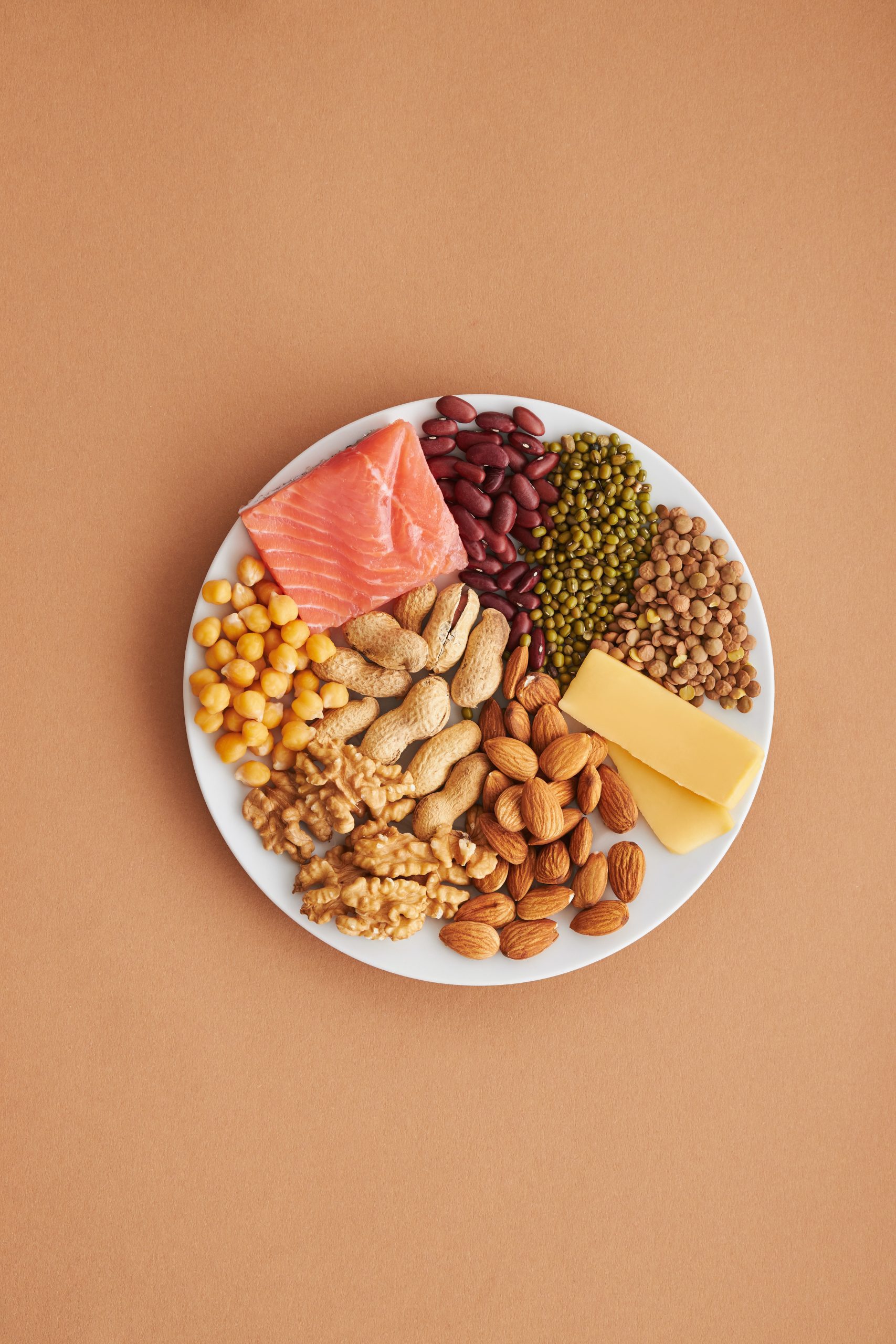
Cholesterol Basics + Five Foods to Improve Your Numbers
Cholesterol can be confusing. What’s good? What’s bad? How can I improve my numbers? These might be questions you’ve asked yourself. Caring about your cholesterol and the general health of your heart is an important first step.
Cholesterol is a waxy, fat-like substance that is found within every cell of your body. Cholesterol can come from two sources; your liver – which makes all the cholesterol you need – and from foods derived from animals. As the amount of cholesterol circulating your blood increases, so can your risks of heart disease. For this reason, it’s important to make annual physicals with your physician a priority.
Cholesterol Basics
There are three types of fatty substances (lipids) in the blood: low-density lipoprotein (LDL), high-density lipoprotein (HDL) and triglycerides.
Low-density lipoprotein (LDL) cholesterol — LDL cholesterol sticks to the walls of your arteries which contribute to the formation of plaque. Plaque is a hard, thick deposit that can clog arteries and make them less flexible. LDL is considered “bad” cholesterol, and lower levels are better for your heart.
High-density lipoprotein (HDL) cholesterol — HDL is known as “good” cholesterol because it helps remove LDL from your arteries and moves it to the liver for removal. Higher levels of HDL are considered good for your heart while low levels have been shown to increase the risk of heart disease
. Triglycerides — Triglycerides are the most common type of fat in the body and store excess energy from your diet. High triglycerides combined with high LDL (“bad” cholesterol) and low HDL (“good” cholesterol) can increase the risk of atherosclerosis (hardening and narrowing of arteries), heart disease and stroke.
Controlling Your Risk Factors
Cholesterol is one of the major controllable factors for heart disease, heart attack, and stroke. According to the CDC, nearly half of Americans have at least one of the three key risk factors for heart disease: high blood pressure, high cholesterol, and smoking. Other risk factors for heart disease, heart attack, and stroke include diabetes, unhealthy diet, sedentary lifestyle, obesity, alcohol consumption, and family history.
You can control these factors through your lifestyle choices. Even simple changes to your day-to-day routines can have a profound impact on your heart health.

Five Foods to Improve Your Heart Health
1. Wild-Caught Fatty Fish
Fatty fish have high levels of [TVBLOGCOPY]omega-3[/TVBLOGCOPY][MWSBLOGCOPY]omega-3[/MWSBLOGCOPY] fatty acids, which can help support heart health. The American Heart Association suggests that you aim for two serving of oily fish per week. Good options include salmon, tuna, trout, mackerel, and sardines.
2. Nuts
Walnuts, almonds and other nuts can help improve cholesterol and lower your risk of developing other chronic diseases. Nuts tend to be high in calories, so a handful a day of raw or unsalted nuts is enough.
3. Soluble Fiber
Oatmeal, whole grains, fruits, and vegetables contain soluble fiber which can lessen the absorption of cholesterol into your bloodstream and reduce LDL cholesterol. Soluble fiber is also found in kidney beans, Brussels sprout, and fruits such as apples and pears.
4. Olive Oil
Substituting unhealthy oils such as canola or corn oil with olive oil can have heart-healthy benefits. Olive oil contains monounsaturated fatty acids (MUFAs) which are considered a healthy dietary fat. Olive oil is also loaded with beneficial antioxidants.
5. Avocados
Avocados are also a good source of healthy fats, antioxidants, Vitamins C, E, K and B vitamins like B5, B6 and folic acid. Avocados also offer minerals, cholesterol- reducing phytosterols and dietary fiber.
-

The Heart of the Matter
Some interesting facts about our Circulatory System
The human body’s circulatory system consists of three independent systems that work together—these include the heart (cardiovascular), arteries, veins, coronary and portal vessels (systemic) and lungs (pulmonary). The circulatory system uses its massive network of veins and arteries to transport blood, oxygen and other nutrients to and from the cells in our body.
Make a fist
Want to estimate the size of your heart? Adults, clench your two fists together for an idea of the size; as for weight, this relentless pumping machine (it pumps 4,000 gallons of blood each day), weighs in at around 11 ounces.

Eye feel left out
Your heart provides nourishing blood to nearly all tissues in the body—except the corneas. Because transparency is required to properly refract light, the corneas contain no blood vessels, instead getting their nourishment from fluids in the chambers behind them.
Around the globe—2.5 times
That’s how far your blood vessels would reach, if laid out end to end in a straight line (60,000 miles). Your blood vessels—consisting of arteries, veins and capillaries—transport blood to and from the heart. The largest, your aorta, is roughly the diameter of a garden hose, while the smallest capillaries would have to team up with 10 of their friends to equal the diameter of a human hair.
Give me a minute
The time it takes for the human body’s roughly five liters of blood to circulate through the body—three times. In one day, your blood travels about 12,000 miles.
A short life, well-lived
A red blood cell—responsible for oxygen delivery and carbon dioxide removal—lives an average 120 days. Red blood cells represent about half of your blood; the rest is made up of plasma, white blood cells,
and platelets.
References:
http://www.nhlbi.nih.gov/health/health-topics/topics/hhw/anatomy
http://www.livescience.com/39925-circulatory-system-facts-surprising.html
https://www.nei.nih.gov/health/cornealdisease
http://learn.fi.edu/learn/heart/index.html
http://www.pbs.org/wgbh/nova/body/map-human-heart.html
http://www.nlm.nih.gov/medlineplus/ency/anatomyvideos/000104.htm -

How Stress Affects Heart Health
Everyone responds to stress in different ways. The amount of stress that you feel and how you react to it can impact every aspect of your well-being – physical, emotional and spiritual wellness. Excessive stress can contribute to a number of health problems such as high blood pressure, anxiety, decreased immune function and digestive issues. Your body’s response to stress may include headaches, back, neck or stomach pain, disrupted sleep and low energy. When stress is constant, your body releases adrenaline as part of the “fight or flight” response of your sympathetic nervous system. This hormone increases your breathing, heart rate and causes your blood pressure to rise. Additional research is needed to fully understand how stress contributes to heart disease, but we do know that how we react to stress can influence behaviors that increase the risk of heart disease. For example, during times of stress many people experience high blood pressure, overeating, inactivity and may turn to alcohol and smoking as a way to cope with their stress. These habits can increase your risk of heart disease.Manage Stress to Reduce Your Risk
Managing stress is key to improving your overall wellness, and positively impacting your heart health as well. Below are five ways you can help reduce stress and strengthen your heart.Exercise
Stress hormones can put an extra burden on the heart, and exercise can help ease stress, lower heart rate, reduce blood pressure, control weight, improve muscles’ ability to draw oxygen from circulating blood and strengthen the heart.Laugh a Little
Daily laughter has been associated with lower prevalence of heart disease and is linked to healthy function of blood vessels, according to research. Laughter causes the tissue that forms the inner lining of blood vessels (the endothelium) to expand in order to increase blood flow, whereas stress has the opposite effect, constricting blood flow.Meditate
A growing body of research has examined how meditation alters the body’s response to stress and indicated that mediation is associated with improved responses to stress. While not fully understood, studies have also shown an association between mediation, a reduction in blood pressure and incidence of heart disease.Take a Breather
Several studies show that practicing deep breathing immediately lowers resting blood pressure and activates the parasympathetic nervous system which helps the body feel relaxed and calm.Unplug
Taking a break from TV, emails and your phone can help ease mental and emotional stress. Make time every day to escape from the fast-paced world – read a book, get a massage or go for a walk in nature. -

The Connection Between C-Reactive Protein, Inflammation and Heart Disease
Why you should ask your doctor for a CRP test
By Lester Adler, M.D., M.D.H. For all the ways bodies are harmed, by viruses, bacteria or trauma, the immune system has but one defense: inflammation. Just a hard pinch will initiate swelling, redness, heat and pain. Specialized cells rush to the call ready to engulf invaders, while others break down compromised tissue so yet others can rebuild, leaving it good as new. Sounds perfect, doesn’t it? Yet many diseases result from the immune system in overdrive. Take heart disease—what was once blamed on dietary fat is now understood to be also about inflammation. Atherosclerosis (hardening of the arteries) starts with a streaky deposit of cholesterol in an artery. The immune cells infiltrate the area to get rid of it, but instead attract more cholesterol, adding to the growth of the plaque. Eventually, complete closure or catastrophic loosening of the clot into the bloodstream could cause a heart attack or stroke. Since this all unfolds below the surface, doctors use diagnostic markers to reveal this disease before it’s too late. Heart disease risk C-reactive protein is one of the hundreds of molecules used in the immune process. Produced by the liver in response to infection or inflammation, and also secreted by fat cells, CRP usually spikes within 48 hours of an acute insult after which it dissipates. But in chronic inflammation, it remains elevated. For instance, people with gum disease have unresolved infection, inflammation, higher CRP levels and higher risk for heart disease. Heart disease was rare just 100 years ago. Therefore this is an elective disease caused by our own lifestyles. Decreasing CRP could be one of the best ways to keep your immune system from turning against you. Essential CRP testing Knowledge is power. This is all the more true when it comes to our health. Since many diseases result from our own lifestyle choices, proper information can motivate us to make a major directional turn. One of the miracles of modern science is the serum blood test. Hundreds of molecules travel through our bloodstream, each one telling a story about our health. When you get your annual blood test, your doctor looks for important indicators that, if out of range, guide in treatment. C-reactive protein (CRP) is not typically among them. Don’t let that stop you. C-reactive protein is an established marker for inflammation, the defense and repair process of the body. It is designed for acute situations. When the irritant, and therefore, the inflammation doesn’t resolve, it hurts cell membranes, such as in arteries and veins. Elevated CRP is linked to a three-fold increase in heart attacks. But, heart disease is just one reason to have your CRP tested. Cancer, chronic lower respiratory disease, stroke, dementia, diabetes and nephritis are also attributed to chronic inflammation. Even depression is now recognized as an inflammatory process. These diseases are usually long in the works. Inflammation silently irritates or “burns” tissue on a microscopic level. At some point symptoms break through. One day a person has a hard time walking. One day they realize that their cough isn’t going away. Or, one day they have a major event like a heart attack or stroke.
The good news is that inflammation and CRP can be brought down. Proper diet, exercise, stress reduction and supplementation can ease the fire allowing tissues to recover… the sooner, the better.
If you would like your doctor to order you a CRP test, ask for one. Say that you have learned that chronic inflammation is a silent condition and you would like to know if you have it. If your insurance will not cover it, then find out what the cash fee is and pay in advance. It could be as little as $10–$20.
I suggest requesting an hs-CRP (high sensitive) test from your doctor. The optimal range is under 0.55 mg/L in men and under 1.5 mg/L in women. 2.4 mg/L has been associated with a doubled risk of a coronary event compared to levels below 1 mg/L; over 11 indicate acute inflammation.
Remember, the CRP test is well worth the investment in your future health.
This article is intended for educational purposes only.
These diseases are usually long in the works. Inflammation silently irritates or “burns” tissue on a microscopic level. At some point symptoms break through. One day a person has a hard time walking. One day they realize that their cough isn’t going away. Or, one day they have a major event like a heart attack or stroke.
The good news is that inflammation and CRP can be brought down. Proper diet, exercise, stress reduction and supplementation can ease the fire allowing tissues to recover… the sooner, the better.
If you would like your doctor to order you a CRP test, ask for one. Say that you have learned that chronic inflammation is a silent condition and you would like to know if you have it. If your insurance will not cover it, then find out what the cash fee is and pay in advance. It could be as little as $10–$20.
I suggest requesting an hs-CRP (high sensitive) test from your doctor. The optimal range is under 0.55 mg/L in men and under 1.5 mg/L in women. 2.4 mg/L has been associated with a doubled risk of a coronary event compared to levels below 1 mg/L; over 11 indicate acute inflammation.
Remember, the CRP test is well worth the investment in your future health.
This article is intended for educational purposes only.
-
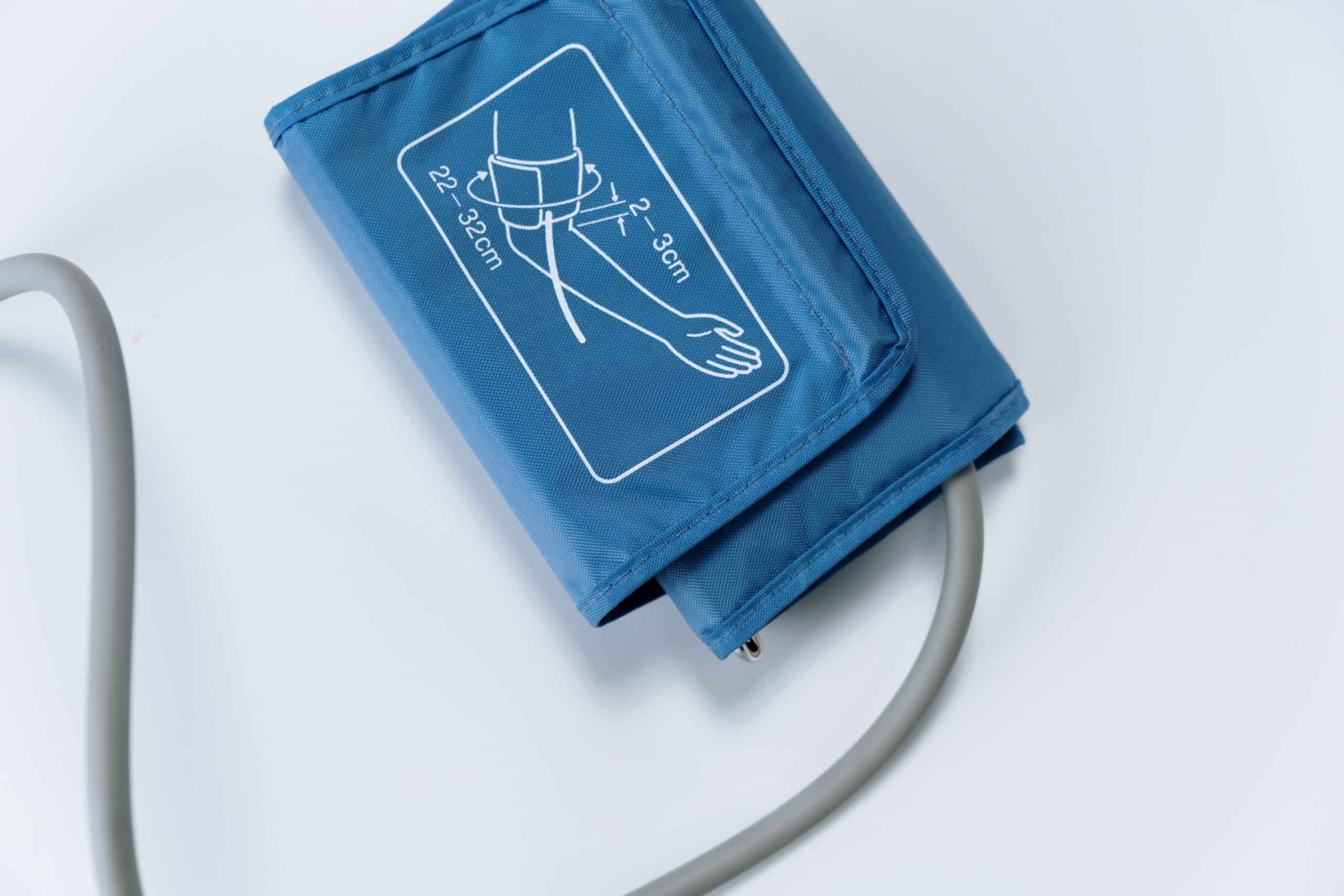
Why is Your Blood Pressure Such a Big Deal?
By Daniela Radulescu, M.D. Blood pressure matters because when it’s too high it can lead to serious health problems: heart attack, stroke, heart failure and kidney disease. That’s why statistics from the U.S., many Western nations and Australia on high blood pressure in adults are alarming—about one in three adults have high blood pressure, or have had in the past. Starting at age 65, women are much more likely to have high blood pressure (BP) than men. There’s no better time than now to understand this common problem, and learn how to manage it for optimal wellness. First, many people with high blood pressure (called “hypertension” in medical circles) have no symptoms at all. So unless they get their blood pressure checked, they have no reason to be concerned or take action. To understand why this is dangerous, we need to look at some fundamentals. Blood pressure is actually the force that the blood in our vessels exerts on the walls of our arteries. This fluctuates because the blood is not pumped continuously from the heart. When the heart pumps blood we get our highest pressure; this is called systolic BP. When the heart stops pumping blood to the vessels, BP drops; this is called diastolic BP. A blood pressure reading is expressed as, for example, 140/90 (140 systolic over 90 diastolic). Over time, excessive blood pressure can damage and weaken the arteries. BP doesn’t stay static; it varies for the same person throughout the day based on the physical or mental state. It is a complex regulation divided between the nervous and endocrine (hormone) systems and can be easily influenced by external factors like physical activity, stress and temperature. This is why the stress of a doctor visit can create “white coat hypertension”: we’re a bit nervous, so our blood pressure rises.Life affects your blood pressure
Is your work stressful? Having relationship problems, or trouble paying your bills? Any of these situations can raise blood pressure for a short time. One reading alone isn’t enough for a diagnosis of high BP, however, and that’s why every visit to your healthcare provider should include a BP check. Your provider might ask you to keep a diary of your BP readings taken at home, or return to the office periodically for BP checks.What’s normal, what’s dangerous
 While there is some disagreement in medicine about what BP reading puts you “at risk,” we can look at ranges for normal and high BP. The current recommended range for normal BP is up to 139/89 mmHG (this means millimeters of mercury; it’s how BP is measured). Generally, the medical world views readings of 140/90 and above as high BP. Readings of 180/110 are considered “very high BP,” or hypertensive emergency, and call for immediate medical attention. Usually, the higher the BP, the higher the risks for health problems.
While there is some disagreement in medicine about what BP reading puts you “at risk,” we can look at ranges for normal and high BP. The current recommended range for normal BP is up to 139/89 mmHG (this means millimeters of mercury; it’s how BP is measured). Generally, the medical world views readings of 140/90 and above as high BP. Readings of 180/110 are considered “very high BP,” or hypertensive emergency, and call for immediate medical attention. Usually, the higher the BP, the higher the risks for health problems.
What you can do
If you get a diagnosis of high BP, the first step is to make lifestyle changes. Your doctor will urge you to stop smoking if you do smoke; find ways to manage stress; control cholesterol; enjoy regular exercise; lose weight if necessary; decrease salt and alcohol intake; and manage diseases that influence BP, such as diabetes and obesity. If these steps don’t get your BP within a normal range, your doctor will discuss additional treatments that are most suited to you. Do yourself, your blood pressure and your health a favor: eat right, exercise and live all of the “10 Essentials” to experience optimal wellness.
References: 1. Health.org: Monitor Your Blood Pressure 2. Heartfoundation.org: Hypertension 3. Healthday.com: Lower Blood Pressure Reduces First Stroke Risk 4. Heart.org: Know Your Risk Factors for High Blood Pressure